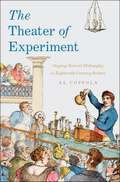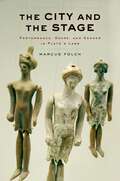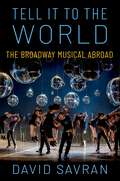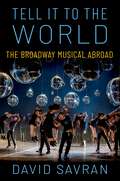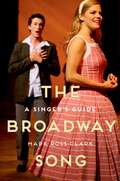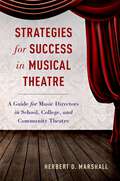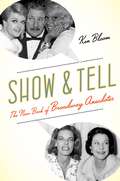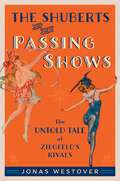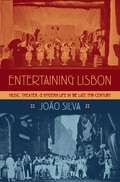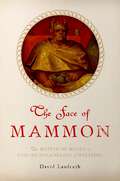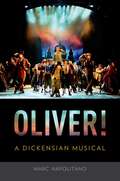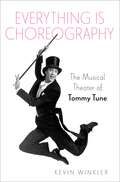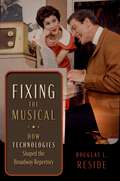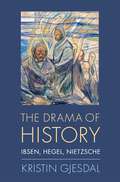- Table View
- List View
The Theater of Experiment: Staging Natural Philosophy in Eighteenth-Century Britain
by Al CoppolaThe first book-length study of the relationship between science and theater during the long eighteenth century in Britain, The Theater of Experiment explores the crucial role of spectacle in the establishment of modern science by analyzing how eighteenth-century science was "staged" in a double sense. On the one hand, this study analyzes science in performance: the way that science and scientists were made a public spectacle in comedies, farces, and pantomimes for purposes that could range from the satiric to the pedagogic to the hagiographic. But this book also considers the way in which these plays laid bare science as performance: that is, the way that eighteenth-century science was itself a kind of performing art, subject to regimes of stagecraft that traversed the laboratory, the lecture hall, the anatomy theater, and the public stage. Not only did the representation of natural philosophy in eighteenth-century plays like Thomas Shadwell's Virtuoso, Aphra Behn's The Emperor of the Moon, Susanna Centlivre's The Basset Table, and John Rich's Necromancer, or Harelequin Doctor Faustus, influence contemporary debates over the role that experimental science was to play public life, the theater shaped the very form that science itself was to take. By disciplining, and ultimately helping to legitimate, experimental philosophy, the eighteenth-century stage helped to naturalize an epistemology based on self-evident, decontextualized facts that might speak for themselves. In this, the stage and the lab jointly fostered an Enlightenment culture of spectacle that transformed the conditions necessary for the production and dissemination of scientific knowledge. Precisely because Enlightenment public science initiatives, taking their cue from the public stages, came to embrace the stagecraft and spectacle that Restoration natural philosophy sought to repress from the scene of experimental knowledge production, eighteenth-century science organized itself around not the sober, masculine "modest witness" of experiment but the sentimental, feminized, eager observer of scientific performance.
The City and the Stage: Performance, Genre, and Gender in Plato's Laws
by Marcus FolchWhat role did poetry, music, song, and dance play in the social and political life of the ancient Greek city? How did philosophy respond to, position itself against, and articulate its own ambitions in relation to the poetic tradition? How did ancient philosophers theorize and envision alternatives to fourth-century Athenian democracy? The City and the Stage poses such questions in a study of the Laws, Plato's last, longest, and unfinished philosophical dialogue. Reading the Laws in its literary, historical, and philosophical contexts, this book offers a new interpretation of Plato's final dialogue with the Greek poetic tradition and an exploration of the dialectic between philosophy and mimetic art. Although Plato is often thought hostile to poetry and famously banishes mimetic art from the ideal city of the Republic, The City and the Stage shows that in his final work Plato made a striking about-face, proposing to rehabilitate Athenian performance culture and envisaging a city, Magnesia, in which poetry, music, song, and dance are instrumental in the cultivation of philosophical virtues. Plato's views of the performative properties of music, dance, and poetic language, and the psychological underpinnings of aesthetic experience receive systematic treatment in this book for the first time. The social role of literary criticism, the power of genres to influence a society and lead to specific kinds of constitutions, performance as a mechanism of gender construction, and the position of women in ancient Greek performance culture are central themes throughout this study. A wide-ranging examination of ancient Greek philosophy and fourth-century intellectual culture, The City and the Stage will be of significance to anyone interested in ancient Greek literature, performance, and Platonic philosophy in its historical contexts.
Tell it to the World: The Broadway Musical Abroad
by David SavranWhat happens when Broadway goes abroad? Tell It to the World: The Broadway Musical Abroad offers a look at how the Broadway musical travels the world, influencing and even transforming local practices and traditions. It traces especially how the musical has been indigenized in South Korea and Germany, the commercial centers for Broadway musicals in East Asia and continental Europe. Both countries were occupied after World War II by the United States, which disseminated U.S. American popular music, jazz, movies, and musical theatre in the belief that these nations needed to rebuild their cultures in accordance with U.S. guidelines. By the 1990s, Broadway imports had become phenomenally popular in Seoul and Hamburg while home-grown musicals proliferated that adapted and transformed the prototypes that had been disseminated by the U.S. Although this book focuses on recent musicals, it also looks back through the twentieth century to plot the evolution of musical theatre in South Korea and Germany. Part One considers the key questions: What is a musical? Why is it the great success story of U.S. theatre? How has it been assimilated to musical theatre traditions around the world? Part Two focuses on musical theatre in South Korea, studying the import/export business in large-scale musicals about Korean history and innovative hybrid experiments that mix local performance traditions with the Broadway vernacular. Part Three moves to Europe to analyze the conflicted attitudes toward musicals in the German-speaking world. Its three chapters survey the history of musicals in Germany from 1945 until the fall of the Berlin Wall, the reconfiguration of musical theatre conventions by experimental directors, and finally the ground-breaking German-language productions of Broadway classics by Barrie Kosky and other innovative directors. In the twenty-first century, Broadway-style musical theatre has succeeded in becoming a lingua franca, the template for musical theatre around the world. This book shows how some of the most innovative, beautiful, and exciting musical theatre is being made outside the United States.
Tell it to the World: The Broadway Musical Abroad
by David SavranWhat happens when Broadway goes abroad? Tell It to the World: The Broadway Musical Abroad offers a look at how the Broadway musical travels the world, influencing and even transforming local practices and traditions. It traces especially how the musical has been indigenized in South Korea and Germany, the commercial centers for Broadway musicals in East Asia and continental Europe. Both countries were occupied after World War II by the United States, which disseminated U.S. American popular music, jazz, movies, and musical theatre in the belief that these nations needed to rebuild their cultures in accordance with U.S. guidelines. By the 1990s, Broadway imports had become phenomenally popular in Seoul and Hamburg while home-grown musicals proliferated that adapted and transformed the prototypes that had been disseminated by the U.S. Although this book focuses on recent musicals, it also looks back through the twentieth century to plot the evolution of musical theatre in South Korea and Germany. Part One considers the key questions: What is a musical? Why is it the great success story of U.S. theatre? How has it been assimilated to musical theatre traditions around the world? Part Two focuses on musical theatre in South Korea, studying the import/export business in large-scale musicals about Korean history and innovative hybrid experiments that mix local performance traditions with the Broadway vernacular. Part Three moves to Europe to analyze the conflicted attitudes toward musicals in the German-speaking world. Its three chapters survey the history of musicals in Germany from 1945 until the fall of the Berlin Wall, the reconfiguration of musical theatre conventions by experimental directors, and finally the ground-breaking German-language productions of Broadway classics by Barrie Kosky and other innovative directors. In the twenty-first century, Broadway-style musical theatre has succeeded in becoming a lingua franca, the template for musical theatre around the world. This book shows how some of the most innovative, beautiful, and exciting musical theatre is being made outside the United States.
BROADWAY SONG A SINGER'S GUIDE C: A Singer's Guide
by Mark Ross ClarkTruly powerful vocal performance in musical theater is more than just the sum of good vocal tone and correct notes. As experienced teacher, director, and performer Mark Ross Clark lays out in The Broadway Song, powerful performance communicates the central function of a song within the context of the surrounding narrative, or the "truth" of a song. Because unstaged performances of a song, such as auditions, are key to the success of all aspiring singers, Clark provides here the essential practical manual that will help performers choose the right pieces for their vocal abilities and identify the key truths of them. Clark begins by walking readers conceptually through how a song's truth is based in contexts: what show is a song from? Which character sings it? When in the show does it occur? Answering these questions will lead readers to more convincing performances that are grounded in the text, music, character, context, and larger environment (setting, time frame, and circumstances). The Broadway Song provides a comprehensive guide to the formal characteristics of key Broadway songs on a song-by-song basis, including main voice type, secondary voice qualities (such as soprano-lyric or alto-comic), range and tessitura, as well as larger contextual materials about the source -- from the musical's background, information about the character singing, and synoptic narrative information for the song -- that provide the performer a way into the character. Clark moreover brings his wide-ranging and extensive experience as a director, performer, and teacher to bear in his performance notes on the individual pieces. Additionally, he includes excerpts from short interviews with artists that provide insight into the song from the perspective of those who first created (or re-created) it. The interviews, conducted with composers, lyricists, performers, and -- in one case -- book collaborators, are snapshots into the creative process, and act as conduits to further study of the selected songs.
STRATEG FOR SUCCESS IN MUS THEATRE C: A Guide for Music Directors in School, College, and Community Theatre
by Herbert D. MarshallIn Strategies for Success in Musical Theatre, veteran musical director and teacher Herbert Marshall provides an essential how-to guide for teachers or community members who find themselves in charge of music directing a show. Stepping off the podium, Marshall offers practical and often humorous real-world advice on managing auditions; organizing rehearsals; working with a choir, choreographer, and leads; how to run a sitzprobe, a technical rehearsal, and a dress rehearsal; how to manage the cast and crew energy for a successful opening night; and ways to end the experience on a high note for all involved. Throughout the book, Marshall emphasizes the importance of learning through performance and the beauty of a group united in a common goal. In doing so, he turns what can appear as a never-ending list of tasks and demand for specialized knowledge into a manageable, educational, and ultimately engaging and fun experience for all. Because the techniques in Marshall's book have been thoroughly workshopped and classroom tested, they are based in proven pedagogy and will be of particular use for the music director in acting as a teaching director: someone imparting theatrical knowledge to his or her cast and production staff. Marshall provides both extended and abbreviated timelines, flexible to fit any director's needs. Marshall's book is a greatly beneficial resource for music education students and teachers alike, giving an insightful glimpse into the range of possibilities within a music educator's career. Musicians and actors with varying levels of skill and experience will be able to grow simultaneously through Marshall's innovative teaching plans. Through collaborative techniques, steps in the book serve to educate both director and student. Thoroughly illustrated with charts, diagrams, and scores, Strategies for Success in Musical Theatre is an ideal companion for all who work with school and community based musical theater productions.
Strategies for Success in Musical Theatre: A Guide for Music Directors in School, College, and Community Theatre
by Herbert D. MarshallIn Strategies for Success in Musical Theatre, veteran musical director and teacher Herbert Marshall provides an essential how-to guide for teachers or community members who find themselves in charge of music directing a show. Stepping off the podium, Marshall offers practical and often humorous real-world advice on managing auditions; organizing rehearsals; working with a choir, choreographer, and leads; how to run a sitzprobe, a technical rehearsal, and a dress rehearsal; how to manage the cast and crew energy for a successful opening night; and ways to end the experience on a high note for all involved. Throughout the book, Marshall emphasizes the importance of learning through performance and the beauty of a group united in a common goal. In doing so, he turns what can appear as a never-ending list of tasks and demand for specialized knowledge into a manageable, educational, and ultimately engaging and fun experience for all. Because the techniques in Marshall's book have been thoroughly workshopped and classroom tested, they are based in proven pedagogy and will be of particular use for the music director in acting as a teaching director: someone imparting theatrical knowledge to his or her cast and production staff. Marshall provides both extended and abbreviated timelines, flexible to fit any director's needs. Marshall's book is a greatly beneficial resource for music education students and teachers alike, giving an insightful glimpse into the range of possibilities within a music educator's career. Musicians and actors with varying levels of skill and experience will be able to grow simultaneously through Marshall's innovative teaching plans. Through collaborative techniques, steps in the book serve to educate both director and student. Thoroughly illustrated with charts, diagrams, and scores, Strategies for Success in Musical Theatre is an ideal companion for all who work with school and community based musical theater productions.
Show and Tell: The New Book of Broadway Anecdotes
by Ken BloomDid you know that Frank Sinatra was nearly considered for the original production of Fiddler on the Roof? Or that Jerome Robbins never choreographed the famous "Dance at the Gym" in West Side Story? Or that Lin-Manuel Miranda called out an audience member on Twitter for texting during a performance of Hamilton (the perpetrator was Madonna)? In Show and Tell: The New Book of Broadway Anecdotes, Broadway aficionado-in-chief Ken Bloom takes us on a spirited spin through some of the most intriguing factoids in show business, offering up an unconventional history of the theatre in all its idiosyncratic glory. From the cantankerous retorts of George Abbott to the literally show-stopping antics of Katharine Hepburn, you'll learn about the adventures and star turns of some of the Broadway's biggest personalities, and discover little-known tidbits about beloved plays and musicals from The Black Crook to Beautiful.
Show and Tell: The New Book of Broadway Anecdotes
by Ken BloomDid you know that Frank Sinatra was nearly considered for the original production of Fiddler on the Roof? Or that Jerome Robbins never choreographed the famous "Dance at the Gym" in West Side Story? Or that Lin-Manuel Miranda called out an audience member on Twitter for texting during a performance of Hamilton (the perpetrator was Madonna)? In Show and Tell: The New Book of Broadway Anecdotes, Broadway aficionado-in-chief Ken Bloom takes us on a spirited spin through some of the most intriguing factoids in show business, offering up an unconventional history of the theatre in all its idiosyncratic glory. From the cantankerous retorts of George Abbott to the literally show-stopping antics of Katharine Hepburn, you'll learn about the adventures and star turns of some of the Broadway's biggest personalities, and discover little-known tidbits about beloved plays and musicals from The Black Crook to Beautiful.
The Shuberts and Their Passing Shows: The Untold Tale of Ziegfeld's Rivals (Broadway Legacies)
by Jonas WestoverThe Shubert name has been synonymous with Broadway for almost as long as Broadway entertainment itself. With seventeen Broadway theatres including the Ambassador, the Music Box, and the Winter Garden, The Shubert Organization perpetuates brothers Lee and Jacob Shubert's business legacy. In The Shuberts and Their Passing Shows: The Untold Tale of Ziegfeld's Rivals, author Jonas Westover investigates beyond the Shuberts' business empire into their early revues and the centrifugal role they played in developing American theatre as an art form. The Shubert-produced revues, titled Passing Shows, were terrifically popular in the teens and twenties, consistently competing with Florenz Ziegfeld's Follies for the greatest numbers of stars, biggest spectacles, and ultimately the largest audiences. The Shuberts and Their Passing Shows is the first-ever book to unpack the colorful history of the productions, delving into their stars, costumes, stagecraft, and orchestration in unprecedented detail. Providing a fresh and exciting window into American theatrical history, Westover traces the fascinating history of the Shuberts' revue series, presented annually from 1912-1924, and covers more broadly the glorious days of early Broadway. In addition to its compelling history of Broadway's Golden Age, The Shuberts and Their Passing Shows also provides a revisionary argument about the overarching history of the revue. Bolstered by a rich collection of documents in the Shubert Theater Archive, Westover argues against the popular misconception that the Shubert's competitor, producer Florenz Ziegfield - responsible for the better-known Follies - was the sole proprietor of Broadway audiences. As Westover proves, not only were the Passing Shows as popular as the Follies but also a key component in a history of the revue that is vastly more complex than previous scholarship has shown. The Shuberts and Their Passing Shows brings to fruition years of original research and invaluable insights into the gilded formation of present day Broadway.
The Shuberts and Their Passing Shows: The Untold Tale of Ziegfeld's Rivals (Broadway Legacies)
by Jonas WestoverThe Shubert name has been synonymous with Broadway for almost as long as Broadway entertainment itself. With seventeen Broadway theatres including the Ambassador, the Music Box, and the Winter Garden, The Shubert Organization perpetuates brothers Lee and Jacob Shubert's business legacy. In The Shuberts and Their Passing Shows: The Untold Tale of Ziegfeld's Rivals, author Jonas Westover investigates beyond the Shuberts' business empire into their early revues and the centrifugal role they played in developing American theatre as an art form. The Shubert-produced revues, titled Passing Shows, were terrifically popular in the teens and twenties, consistently competing with Florenz Ziegfeld's Follies for the greatest numbers of stars, biggest spectacles, and ultimately the largest audiences. The Shuberts and Their Passing Shows is the first-ever book to unpack the colorful history of the productions, delving into their stars, costumes, stagecraft, and orchestration in unprecedented detail. Providing a fresh and exciting window into American theatrical history, Westover traces the fascinating history of the Shuberts' revue series, presented annually from 1912-1924, and covers more broadly the glorious days of early Broadway. In addition to its compelling history of Broadway's Golden Age, The Shuberts and Their Passing Shows also provides a revisionary argument about the overarching history of the revue. Bolstered by a rich collection of documents in the Shubert Theater Archive, Westover argues against the popular misconception that the Shubert's competitor, producer Florenz Ziegfield - responsible for the better-known Follies - was the sole proprietor of Broadway audiences. As Westover proves, not only were the Passing Shows as popular as the Follies but also a key component in a history of the revue that is vastly more complex than previous scholarship has shown. The Shuberts and Their Passing Shows brings to fruition years of original research and invaluable insights into the gilded formation of present day Broadway.
Entertaining Lisbon: Music, Theater, and Modern Life in the Late 19th Century (Currents in Latin American and Iberian Music)
by Joao SilvaDuring the decades leading up to 1910, Portugal saw vast material improvements under the guise of modernization while in the midst of a significant political transformation - the establishment of the Portuguese First Republic. Urban planning, everyday life, and innovation merged in a rapidly changing Lisbon. Leisure activities for the citizens of the First Republic began to include new forms of musical theater, including operetta and the revue theater. These theatrical forms became an important site for the display of modernity, and the representation of a new national identity. Author João Silva argues that the rise of these genres is inextricably bound to the complex process through which the idea of Portugal was presented, naturalized, and commodified as a modern nation-state. Entertaining Lisbon studies popular entertainment in Portugal and its connections with modern life and nation-building, showing that the promotion of the nation through entertainment permeated the market for cultural goods. Exploring the Portuguese entertainment market as a reflection of ongoing negotiations between local, national, and transnational influences on identity, Silva intertwines representations of gender, class, ethnicity, and technology with theatrical repertoires, street sounds, and domestic music making. An essential work on Portuguese music in the English language, Entertaining Lisbon is a critical study for scholars and students of musicology interested in Portugal, and popular and theatrical musics, as well as historical ethnomusicologists, cultural historians, and urban planning researchers interested in the development of material culture.
Erotic Subjects: The Sexuality of Politics in Early Modern English Literature
by Melissa E. SanchezTreating sixteenth- and seventeenth-century erotic literature as part of English political history, Erotic Subjects traces some surprising implications of two early modern commonplaces: first, that love is the basis of political consent and obedience, and second, that suffering is an intrinsic part of love. Rather than dismiss such assumptions as mere conventions, Melissa Sanchez uncovers the political import of early modern literature's fascination with eroticized violence. Focusing on representations of masochism, sexual assault, and cross-gendered identification, Sanchez re-examines the work of politically active writers from Philip Sidney to John Milton. She argues that political allegiance and consent appear far less conscious and deliberate than traditional historical narratives allow when Sidney depicts abjection as a source of both moral authority and sexual arousal; when Edmund Spenser and William Shakespeare make it hard to distinguish between rape and seduction; when Mary Wroth and Margaret Cavendish depict women who adore treacherous or abusive lovers; when court masques stress the pleasures of enslavement; or when Milton insists that even Edenic marriage is hopelessly pervaded by aggression and self-loathing. Sanchez shows that this literature constitutes an alternate tradition of political theory that acknowledges the irrational and perverse components of power and thereby disrupts more conventional accounts of politics as driven by self-interest, false consciousness, or brute force. Erotic Subjects will be of interest to students and scholars of early modern literary and political history, as well as those interested in the histories of gender, sexuality, and affect more generally.
The Face of Mammon: The Matter of Money in English Renaissance Literature
by David LandrethMoney talked in sixteenth-century England, as money still does today. But what the sixteenth century's gold and silver had to say for itself is strikingly different from the modern discourse of money. As David Landreth demonstrates in The Face of Mammon, the material and historical differences between the coins of the English Renaissance and today's paper and electronic money propel a distinctive and complex assessment of the relation between material substance and human value. Although the sixteenth century was marked by the traumatic emergence of conditions that would prove to be characteristic of the modern economy, the discipline of economics had not been invented to assess those conditions. The Face of Mammon considers how literary texts investigated these unexplained material transformations through attention to the materiality of gold and silver money. In new readings of Spenser's Faerie Queene, Marlowe's Jew of Malta, three plays by Shakespeare-King John, The Merchant of Venice, and Measure for Measure-the poetry of John Donne, and the prose of Thomas Nashe, Landreth argues that these texts situate the act of exchange at the center of a system of "common wealth" that sought to integrate political, ethical, and religious values with material ones, and probe the ways in which market value corrodes that system even as it depends upon it. Joining the methods of material-culture studies to those of economic criticism, The Face of Mammon offers a new account of the historical transformations of the concept of value to scholars of early modern literature, culture, and art, as well as to those interested in economic history.
Oliver!: A Dickensian Musical
by Marc NapolitanoWhen the show was first produced in 1960, at a time when transatlantic musical theatre was dominated by American productions, Oliver! already stood out for its overt Englishness. But in writing Oliver!, librettist and composer Lionel Bart had to reconcile the Englishness of his Dickensian source with the American qualities of the integrated book musical. To do so, he turned to the musical traditions that had defined his upbringing: English music hall, Cockney street singing, and East End Yiddish theatre. This book reconstructs the complicated biography of Bart's play, from its early inception as a pop musical inspired by a marketable image, through its evolution into a sincere Dickensian adaptation that would push English musical theatre to new dramatic heights. The book also addresses Oliver!'s phenomenal reception in its homeland, where audiences responded to the musical's Englishness with a nationalistic fervor. The musical, which has more than fulfilled its promise as one of the most popular English musicals of all time, remains one of the country's most significant shows. Author Marc Napolitano shows how Oliver!'s popularity has ultimately exerted a significant influence on two separate cultural trends. Firstly, Bart's adaptation forever impacted the culture text of Dickens's Oliver Twist; to this day, the general perception of the story and the innumerable allusions to the novel in popular media are colored heavily by the sights, scenes, sounds, and songs from the musical, and virtually every major adaptation of from the 1970s on has responded to Bart's work in some way. Secondly, Oliver! helped to move the English musical forward by establishing a post-war English musical tradition that would eventually pave the way for the global dominance of the West End musical in the 1980s. As such, Napolitano's book promises to be an important book for students and scholars in musical theatre studies as well as to general readers interested in the megamusical.
Paracomedy: Appropriations of Comedy in Greek Tragedy
by Craig JendzaParacomedy: Appropriations of Comedy in Greek Drama is the first book that examines how ancient Greek tragedy engages with the genre of comedy. While scholars frequently study paratragedy (how Greek comedians satirize tragedy), this book investigates the previously overlooked practice of paracomedy: how Greek tragedians regularly appropriate elements from comedy such as costumes, scenes, language, characters, or plots. Drawing upon a wide variety of complete and fragmentary tragedies and comedies (Aeschylus, Sophocles, Euripides, Aristophanes, Rhinthon), this monograph demonstrates that paracomedy was a prominent feature of Greek tragedy. Blending a variety of interdisciplinary approaches including traditional philology, literary criticism, genre theory, and performance studies, this book offers innovative close readings and incisive interpretations of individual plays. Jendza presents paracomedy as a multivalent authorial strategy: some instances impart a sense of ugliness or discomfort; others provide a sense of light-heartedness or humor. While this work traces the development of paracomedy over several hundred years, it focuses on a handful of Euripidean tragedies at the end of the fifth century BCE. Jendza argues that Euripides was participating in a rivalry with the comedian Aristophanes and often used paracomedy to demonstrate the poetic supremacy of tragedy; indeed, some of Euripides' most complex uses of paracomedy attempt to re-appropriate Aristophanes' mockery of his theatrical techniques. Paracomedy: Appropriations of Comedy in Greek Tragedy theorizes a new, ground-breaking relationship between Greek tragedy and comedy that not only redefines our understanding of the genre of tragedy, but also reveals a dynamic theatrical world filled with mutual cross-generic influence.
Paracomedy: Appropriations of Comedy in Greek Tragedy
by Craig JendzaParacomedy: Appropriations of Comedy in Greek Drama is the first book that examines how ancient Greek tragedy engages with the genre of comedy. While scholars frequently study paratragedy (how Greek comedians satirize tragedy), this book investigates the previously overlooked practice of paracomedy: how Greek tragedians regularly appropriate elements from comedy such as costumes, scenes, language, characters, or plots. Drawing upon a wide variety of complete and fragmentary tragedies and comedies (Aeschylus, Sophocles, Euripides, Aristophanes, Rhinthon), this monograph demonstrates that paracomedy was a prominent feature of Greek tragedy. Blending a variety of interdisciplinary approaches including traditional philology, literary criticism, genre theory, and performance studies, this book offers innovative close readings and incisive interpretations of individual plays. Jendza presents paracomedy as a multivalent authorial strategy: some instances impart a sense of ugliness or discomfort; others provide a sense of light-heartedness or humor. While this work traces the development of paracomedy over several hundred years, it focuses on a handful of Euripidean tragedies at the end of the fifth century BCE. Jendza argues that Euripides was participating in a rivalry with the comedian Aristophanes and often used paracomedy to demonstrate the poetic supremacy of tragedy; indeed, some of Euripides' most complex uses of paracomedy attempt to re-appropriate Aristophanes' mockery of his theatrical techniques. Paracomedy: Appropriations of Comedy in Greek Tragedy theorizes a new, ground-breaking relationship between Greek tragedy and comedy that not only redefines our understanding of the genre of tragedy, but also reveals a dynamic theatrical world filled with mutual cross-generic influence.
Everything is Choreography: The Musical Theater of Tommy Tune (Broadway Legacies)
by Kevin WinklerGrand Hotel. My One and Only. Nine. The Best Little Whorehouse in Texas. A Day in Hollywood/A Night in the Ukraine. The Will Rogers Follies. For two decades, Tommy Tune was the maestro presiding over a string of glittering Broadway musicals that took the tradition of complete musical staging by a director-choreographer into a new era defined by spectacle and technology. He was last in a grand lineage led by Jerome Robbins, Gower Champion, Bob Fosse, and Michael Bennett, but also provided a link to a new generation of choreographers-turned-directors like Susan Stroman, Jerry Mitchell, and Casey Nicholaw. Unlike his fellow director-choreographers, Tune also maintained a successful performing career. His nine Tony Awards (plus a tenth, for Lifetime Achievement) were earned across four categories, not only for choreography and direction, but also as both featured and lead actor in a musical, for Seesaw and My One and Only--a distinction no one else can claim. Tune took the musical forward by looking backward, bringing satiric energy and contemporary style to a trove of show business antecedents--from clog dancing to showgirl formations, from precision kick lines to Fred Astaire and Ginger Rogers-style ballroom glides. He did the same with his concert and cabaret performances, drawing on classics from the Gershwins, Irving Berlin, and Cole Porter and performing them not as nostalgia but as vital, immediate statements of personal philosophy. Everything is Choreography: The Musical Theater of Tommy Tune is the first full scale book about the career of this prodigious artist. It celebrates and examines with a critical eye his major projects, and summons for readers a glorious period of dance, performance, and theatrical imagination.
Everything is Choreography: The Musical Theater of Tommy Tune (Broadway Legacies)
by Kevin WinklerGrand Hotel. My One and Only. Nine. The Best Little Whorehouse in Texas. A Day in Hollywood/A Night in the Ukraine. The Will Rogers Follies. For two decades, Tommy Tune was the maestro presiding over a string of glittering Broadway musicals that took the tradition of complete musical staging by a director-choreographer into a new era defined by spectacle and technology. He was last in a grand lineage led by Jerome Robbins, Gower Champion, Bob Fosse, and Michael Bennett, but also provided a link to a new generation of choreographers-turned-directors like Susan Stroman, Jerry Mitchell, and Casey Nicholaw. Unlike his fellow director-choreographers, Tune also maintained a successful performing career. His nine Tony Awards (plus a tenth, for Lifetime Achievement) were earned across four categories, not only for choreography and direction, but also as both featured and lead actor in a musical, for Seesaw and My One and Only--a distinction no one else can claim. Tune took the musical forward by looking backward, bringing satiric energy and contemporary style to a trove of show business antecedents--from clog dancing to showgirl formations, from precision kick lines to Fred Astaire and Ginger Rogers-style ballroom glides. He did the same with his concert and cabaret performances, drawing on classics from the Gershwins, Irving Berlin, and Cole Porter and performing them not as nostalgia but as vital, immediate statements of personal philosophy. Everything is Choreography: The Musical Theater of Tommy Tune is the first full scale book about the career of this prodigious artist. It celebrates and examines with a critical eye his major projects, and summons for readers a glorious period of dance, performance, and theatrical imagination.
Fixing the Musical: How Technologies Shaped the Broadway Repertory
by Douglas L. ResideThousands of shows have opened on Broadway. Why do we remember some and not others? The musical theatre repertory is not composed of titles popular in the theatre but by those with successful cast recordings, movie versions, or even illegal bootlegs on YouTube. The shows audiences know, and the texts and music they expect to hear when they attend a production, are defined by media consumed at home more than by memories of performances witnessed in the theatre. For example, author Doug Reside shows that it is no accident that the serious book musical with a fixed score developed in the 1940s - when commercially pressed and marketed record albums made it possible to record most of the score of a new musical in a fixed medium. And Hamilton, a musical with dense lyrics and revolutionary musical style, would not have been as easily accessible to world audiences if most hadn't already had the opportunity to learn the score by listening to free digital streams of the original cast recording. The technologies that made these media possible developed concurrently with and shaped the American musical as an art form. Reside uncovers how the affordances and limitations of these technologies established a repertory of titles that are most frequently performed and defined by the texts used in these performances. Fixing the Musical argues that the musicals we most remember are those which most effectively used their era's best recording and distribution technologies to document and share the work with those who would never see the original production on Broadway.
Fixing the Musical: How Technologies Shaped the Broadway Repertory
by Douglas L. ResideThousands of shows have opened on Broadway. Why do we remember some and not others? The musical theatre repertory is not composed of titles popular in the theatre but by those with successful cast recordings, movie versions, or even illegal bootlegs on YouTube. The shows audiences know, and the texts and music they expect to hear when they attend a production, are defined by media consumed at home more than by memories of performances witnessed in the theatre. For example, author Doug Reside shows that it is no accident that the serious book musical with a fixed score developed in the 1940s - when commercially pressed and marketed record albums made it possible to record most of the score of a new musical in a fixed medium. And Hamilton, a musical with dense lyrics and revolutionary musical style, would not have been as easily accessible to world audiences if most hadn't already had the opportunity to learn the score by listening to free digital streams of the original cast recording. The technologies that made these media possible developed concurrently with and shaped the American musical as an art form. Reside uncovers how the affordances and limitations of these technologies established a repertory of titles that are most frequently performed and defined by the texts used in these performances. Fixing the Musical argues that the musicals we most remember are those which most effectively used their era's best recording and distribution technologies to document and share the work with those who would never see the original production on Broadway.
The Drama of History: Ibsen, Hegel, Nietzsche
by Kristin GjesdalHenrik Ibsen's plays have long beguiled philosophically-oriented readers. From Nietzsche to Adorno to Cavell, philosophers have drawn inspiration from Ibsen. But what of Ibsen's own philosophical orientation? As part of larger European movements to reinvent drama, Ibsen and fellow playwrights grappled with contemporary philosophy. Philosophy of drama found a central place with figures such as Gotthold Ephraim Lessing and Johann Gottfried Herder, but reached its mature form, in Ibsen's time, in the works of G.W.F. Hegel and Friedrich Nietzsche. Kristin Gjesdal reveals the centrality of philosophy of theater in nineteenth-century philosophy and shows how drama, as an art form, offers insight into human historicity and the conditions of modern life. The Drama of History deepens and actualizes the relationship between philosophy and drama--not by suggesting that either philosophy or drama should have the upper hand, but rather by indicating how a sustained dialogue between them brings out the meaning and intellectual power of each. Her study reveals underappreciated aspects of Hegel's and Nietzsche's works through their reception in European art and investigates the philosophical dimensions of Ibsen's drama. At the heart of this interrelation between philosophy and drama is a shared interest in exploring the existential condition of human life as lived and experienced in history.
The Drama of History: Ibsen, Hegel, Nietzsche
by Kristin GjesdalHenrik Ibsen's plays have long beguiled philosophically-oriented readers. From Nietzsche to Adorno to Cavell, philosophers have drawn inspiration from Ibsen. But what of Ibsen's own philosophical orientation? As part of larger European movements to reinvent drama, Ibsen and fellow playwrights grappled with contemporary philosophy. Philosophy of drama found a central place with figures such as Gotthold Ephraim Lessing and Johann Gottfried Herder, but reached its mature form, in Ibsen's time, in the works of G.W.F. Hegel and Friedrich Nietzsche. Kristin Gjesdal reveals the centrality of philosophy of theater in nineteenth-century philosophy and shows how drama, as an art form, offers insight into human historicity and the conditions of modern life. The Drama of History deepens and actualizes the relationship between philosophy and drama--not by suggesting that either philosophy or drama should have the upper hand, but rather by indicating how a sustained dialogue between them brings out the meaning and intellectual power of each. Her study reveals underappreciated aspects of Hegel's and Nietzsche's works through their reception in European art and investigates the philosophical dimensions of Ibsen's drama. At the heart of this interrelation between philosophy and drama is a shared interest in exploring the existential condition of human life as lived and experienced in history.
Gays on Broadway
by Ethan MorddenA fascinating look at the gay and lesbian influence on the American stage by an internationally-recognized authority on the topic From the genteel female impersonators of the 1910s to the raucous drag queens of La Cage Aux Folles, from the men of The Normal Heart to the women of Fun Home, and from Eva Le Gallienne and Tallulah Bankhead to Tennessee Williams and Nathan Lane, Gays On Broadway deftly chronicles the plays and people that brought gay culture to Broadway. Writing with his customary verve and wit, author Ethan Mordden follows the steady liberation of gay themes on the American stage. The story begins in the early twentieth century, when gay characters were virtually banned from productions. The 1920s saw a flurry of plays closed on moral grounds as well as the Wales Padlock Act, which forbade representation of "sex degeneracy". While authorities made consistent attempts to shutter the movement, the public remained curious, and after a few decades of war making, a truce broke out when The Boys In the Band became a national smash hit. From this point on, gay theatre proved simply too popular to abolish. With this change, theatre was graced with a host of unforgettable characters - from thrill killers to historical figures to drag performers, as well as professional gays (such as the defiantly effeminate window dresser in Kiss of the Spider Woman), closeted gays, and those run-of-the-mill citizens who don't reside entirely within the colorful nonconformist identity (such as the two male lovers in the dinner-theatre comedy Norman, Is That You?). Spoken plays and musicals, playwrights, directors, and actors all played their part in popularizing the gay movement through art. Gays on Broadway is an essential chronological review of the long journey to bring the culture of gay men and women onto the American stage.
Gays on Broadway
by Ethan MorddenA fascinating look at the gay and lesbian influence on the American stage by an internationally-recognized authority on the topic From the genteel female impersonators of the 1910s to the raucous drag queens of La Cage Aux Folles, from the men of The Normal Heart to the women of Fun Home, and from Eva Le Gallienne and Tallulah Bankhead to Tennessee Williams and Nathan Lane, Gays On Broadway deftly chronicles the plays and people that brought gay culture to Broadway. Writing with his customary verve and wit, author Ethan Mordden follows the steady liberation of gay themes on the American stage. The story begins in the early twentieth century, when gay characters were virtually banned from productions. The 1920s saw a flurry of plays closed on moral grounds as well as the Wales Padlock Act, which forbade representation of "sex degeneracy". While authorities made consistent attempts to shutter the movement, the public remained curious, and after a few decades of war making, a truce broke out when The Boys In the Band became a national smash hit. From this point on, gay theatre proved simply too popular to abolish. With this change, theatre was graced with a host of unforgettable characters - from thrill killers to historical figures to drag performers, as well as professional gays (such as the defiantly effeminate window dresser in Kiss of the Spider Woman), closeted gays, and those run-of-the-mill citizens who don't reside entirely within the colorful nonconformist identity (such as the two male lovers in the dinner-theatre comedy Norman, Is That You?). Spoken plays and musicals, playwrights, directors, and actors all played their part in popularizing the gay movement through art. Gays on Broadway is an essential chronological review of the long journey to bring the culture of gay men and women onto the American stage.
